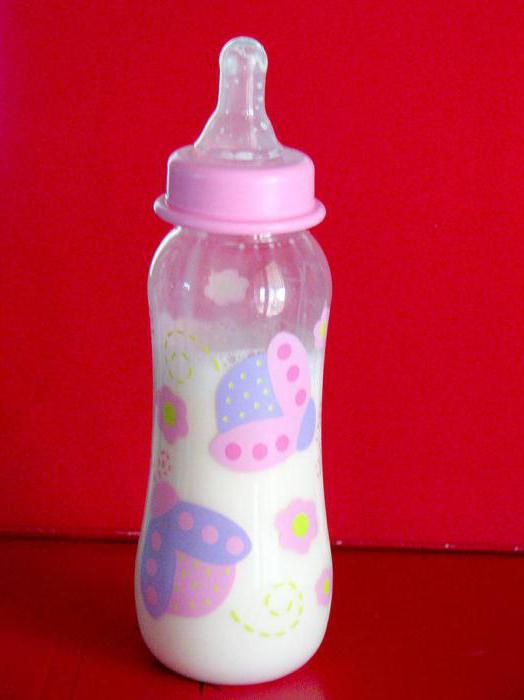Breastfeeding is a great time in a woman's life. This is the period when she feels a special affinity with her newborn baby. And in order to avoid those problems that may occur during breastfeeding, you must carefully monitor the condition of the mammary glands and follow certain rules.
Causes of Lactostasis
Stagnation of milk is a common problem that occurs in women after childbirth, especially in those who breast-feed for a long time. Lactostasis is manifested in the form of swelling in the mammary glands and difficulty in excreting milk.

Most often, pathology occurs if:
- The ducts in the chest become clogged (due to cracks on the surface of the nipples).
- A woman wears lingerie that is unsuitable for nursing mothers.
- Breast damage has occurred.
- The woman takes too long breaks between feedings.
- She uses the same pose or expresses milk in only one way (not all areas of the mammary glands are emptied).
- A woman sleeps for a long time on her side.
- The baby was given complementary foods, and he consumes much less breast milk.
- A woman overwork and lack of sleep, which negatively affects the condition of the mammary glands.
If a young mother faced lactostasis, she, of course, would like, if possible, to fix the problem herself. Indeed, a nursing woman has little time for herself, and sometimes she does not have time to go to the clinic and undergo examination and treatment. The article will discuss how to determine the stagnation of milk at home, and what methods and means are for this.
Signs of Lactostasis
How is this pathology manifested? Lactostasis can be detected in the presence of the following symptoms in a nursing mother:
- Pain in the mammary glands.
- Compaction and redness of some parts of the chest.
- Headaches and muscle aches.
- Stopping milk production.
- Fever.
- With pressure in the chest, swelling in the form of lobules can be noticed.
All of the above signs indicate a blockage of the ducts of the mammary glands and the formation of a clot of milk, which does not stand out, but remains inside the tissue, causing pain.
In no case should you start the disease, because this can lead to the appearance of mastitis. This inflammatory process cannot be eliminated at home. You can get rid of mastitis only with the help of physiotherapy. Sometimes it is so neglected that an operation is required to eliminate it.
Preventative measures
The article will talk about how to determine the stagnation of milk at home. But preventing diseases is much better and easier than treating them.
To avoid such a problem, you must first establish a clear feeding regime for the baby and normalize the woman’s nutrition. Spicy, fatty, sweet foods, pickles and buns should be excluded from the diet, as all these products contribute to the blockage of the ducts of the chest and stagnation of milk. It is necessary to properly care for the nipples and skin of the mammary glands, wear a comfortable bra.
Many women are very scared when they discover the symptoms of lactostasis. “I can’t explain the stagnation of milk, what should I do?” They ask. Often older relatives (mothers, grandmothers) give the wrong advice. They recommend lactating women to constantly express milk.

It used to be that if you do not do this, mastitis will occur. But this is an erroneous opinion. Women who are trying to solve the problem of lactostasis themselves or with the help of dubious advice, only exacerbate the situation.
Hygiene
If a nursing mother is faced with a pathology such as stagnation of milk, she needs, first of all, to calm down and determine what measures should be taken. One of the most important aspects is compliance with the rules of hygiene of the mammary glands. First of all, before and after the feeding procedure, you must wash your hands with soap and water. It is necessary to wash the mammary glands at least 2 times a day. It is better to use fragrance-free liquid soap for this. You need to wipe the chest with a napkin, not a towel, as coarse tissue can intensify pain. If cracks are observed in the area of the nipples, they must be treated with medicinal oil or ointment.
In addition, the bra worn by a nursing woman should be as comfortable as possible, made from natural materials. Such underwear will not squeeze tissue, provoking lactostasis.
So, the first condition for a successful fight against pathology is cleanliness. How to decant stagnation of milk by hand will be discussed a little later.
What measures should be taken?
Lactostasis occurs for various reasons. But there are ways with which you can determine the stagnation of milk at home. And it does not matter for what reason this pathology appeared. Firstly, the baby should be fed as often as possible.

It will be better if the area of edema that occurs when milk stagnates is located under the jaw of the baby. It is necessary to ensure that the child gags both the nipple and the areola. During the feeding procedure, a woman should massage her breasts with knuckles. This will improve the outflow of milk. During the period of hepatitis B, it is necessary to include more oily fish and vegetable oil in the diet. If it is not possible to decant stagnation of milk, certain compresses help. This procedure will be discussed later. But the main way to get rid of lactostasis is decantation. This process requires attention and compliance with some important rules.
Express preparation
If you feed the baby not according to the established schedule, but according to his desire, then additional emptying of the mammary glands is not required. But if lactostasis is already observed in a nursing woman, it is necessary to remove milk from the breast where it accumulated as soon as possible.
How to determine milk stagnation? First of all, you need to prepare the chest. Before decanting, it is important to warm the tissues with a hot shower, since heat helps eliminate blockages in the ducts of the glands. Then you need to do a massage. It must be remembered that with lactostasis, the mammary glands can be emptied only with your hands, in no case with a breast pump. Before decantation, many doctors advise applying lotions from cabbage leaves with a thin layer of honey. These compresses eliminate pain and relieve swelling, but they should be applied for no more than fifteen minutes.
Breast milk stasis: how to treat with compresses
When used correctly, this method is useful, since lotions warm and relax tissues. As a result, the ducts of the mammary glands are better emptied during pumping. Compress can be made from a napkin or diaper dipped in warm water, or a heating pad. If a woman has at least a slight fever, lotions should not be done. It is better to wait until the heat subsides, and only then begin to prepare for decantation.
As a folk remedy that alleviates the symptoms of lactostasis, you can also use a cake made from flour and honey or lotions from low-fat cottage cheese. This will soften the skin, especially cracked, and it will be easier for a woman to express milk.
Breast Massage
Before deciphering milk stasis with your hands, you must carefully stretch your chest.
First of all, you should take the most comfortable position, preferably horizontal, relax the whole body. 4 fingers of one hand should be placed under the mammary gland, while the thumb and forefinger should be connected to the area of the skin next to the paranasal circle. The other palm should lie on the surface of the chest. It is necessary to slightly press on the mammary gland, it is better to make movements in the direction from the lateral to the central part. You don’t need to push too much. After some time, it is recommended to change the nature of the movements to stroking and tapping. Massage the chest for no more than twenty minutes. If a woman before that did not know how to correctly decant stagnation of milk with her hands, and lactostasis acquired a running course, she will feel improvement no sooner than three days later.
Choosing the right position for breastfeeding
A common cause of lactostasis is an irregular or uniform posture with HS.
The question of how to determine the stagnation of milk at home can be solved by selecting the appropriate position for feeding. Then the child will contribute to the outflow of milk and the elimination of edema and blockage of the duct of the gland.
First of all, it is necessary to understand in which areas of the tissue a swelling has occurred. If it formed in the armpit, you need to feed the child in a position from under the arm.

If the middle of the chest is swollen, the HB procedure should be performed lying on its side. The swelling from below will quickly subside if you feed the baby, sitting him on his knees. If edema occurs in the upper area of the mammary gland, you need to give the baby a breast, laying him on the bed and leaning over him.

If milk stagnation is not accompanied by an increase in temperature, you can apply a warm lotion or take a hot shower, massage and express before the procedure. A cold compress will also help cope with pain and severe swelling.
Physiotherapy
If a woman observes all the necessary rules and at the same time she does not manage to decipher the stagnation of milk, what should I do in this situation? Seek medical attention. Physiotherapy, which is prescribed by the doctor, helps to eliminate the signs of lactostasis. Most often, therapy for this pathology is carried out using ultrasound and exposure to electromagnetic fields. In some cases, to relieve pain and heat during stagnation of milk, the specialist recommends medicines (Drotaverinum, Panadolum), as well as ointment, cream or infusion, which can be purchased at any pharmacy. Of course, in each specific situation, the doctor can choose the right treatment and tell how to determine the stagnation of milk at home, to those women who do not know about this procedure.
What is absolutely impossible to do?
So, the list of actions that are strictly prohibited with lactostasis includes:
- The termination of breastfeeding. This is extremely undesirable, since it is the baby that empties the mammary glands most effectively.
- Warming up breast tissue (if a woman does not plan to decant lactostasis).
- Treatment of the mammary glands with Vishnevsky ointment, camphor or ethyl alcohol.
- Tightening the chest with bandages, bandages.
- Ignoring pronounced symptoms and refusing to consult a gynecologist in the presence of very high fever or severe pain.
- The use of drugs on their own, without specialist supervision. This can make things worse.

It must be remembered that if the symptoms of milk stagnation do not disappear within two to three days, you should contact the clinic to avoid complications such as purulent mastitis, which can only be treated with surgery or antibiotics.

Fortunately, in our time there are drugs that fight inflammation, and are not a contraindication for breastfeeding. So if a woman has mastitis and has prescribed antibiotics, she does not need to interrupt breastfeeding.